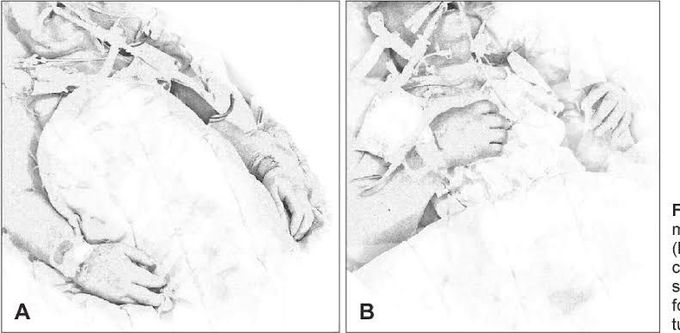


Lazarus sign
In the diagnosis of brain death, it is generally accepted that respiratory function has to be absent, however, spinal reflexes can be preserved. We presented a patient who showed a complex movements of upper limbs (Lazarus' sign) and respiratory like movement during the apnea test for the determination of brain death. This 72-year old female admitted to our hospital in a semicomatous state due to severe subarachnoid and ventricular hemorrhage. Her conscious level suddenly deteriorated to deep coma because of second hemorrhage on the same day. She became apnea and no brain stem reflexes elicited. Three days later, electrophysiological examination revealed a flat recording of electroencephalography, absence of auditory evoked potentials and no response of blink reflex. Short latency somatosensory evoked potentials obtained by median nerve stimulation showed the presence of Erb's N9 and spinal N13-P 13 components originating from cervical dorsal horn, however, the scalp P13 generated by cervico-medullary junction was absent. This patient fulfilled all other criteria for brain death. Four days after, an apnea test was performed. Spontaneous movements of both upper limbs were observed starting between 7 and 8 minutes after disconnecting the intubation tube from the ventilator. Both arms flexed at the elbow, abducted and elevated from the bed. Then, both hands were brought up to chest. Wrist and fingers were in a neutral position (Lazarus' sign). Simultaneously, shallow and irregular respiration like movements were recognized. These movements ceased immediately after connecting the respirator. These two types of movements were reproducible except for in the final test. Blood pressure gradually decreased, and cardiac arrest occurred one hour after.

